The Y - belt in this form (with
support straps) was introduced in April 1939 and initially only
intended for Infantrymen in rifle companies.
Later in the war the Y-belt also was authorised for motorcycle units
(1941) and bicycle units (1943).
Initially its official name was «Koppeltragegestell
aus Leder mit Hilfstrageriemen» which can be
translated as Belt suspenders from leather with auxiliary carrying
straps, but later with
the order
HM 40, No.
431 of 2 April 1940 the name was changed in
«Koppeltragegestell für Infanterie»
which means as much as belt suspenders for Infantry
The function of the belt is to evenly distribute the weight of the equipment (which was considerable).
Before the Y-belts came into service
the weight of the belt was supported by the
uniform belt hooks with the internal suspenders for the M36 Uniform which will
be covered in another section.
Physical description :
The belt is made of smooth
leather, painted black on the outside and natural colour from the inside.
The metal parts are initially made from a aluminium but as the war
progressed from steel which was painted light grey.
Later the metal parts were left unpainted.
-----------------------------------------------------------------------------------------
Below: A rare 1939 dated Y belt with all metal parts of aluminium
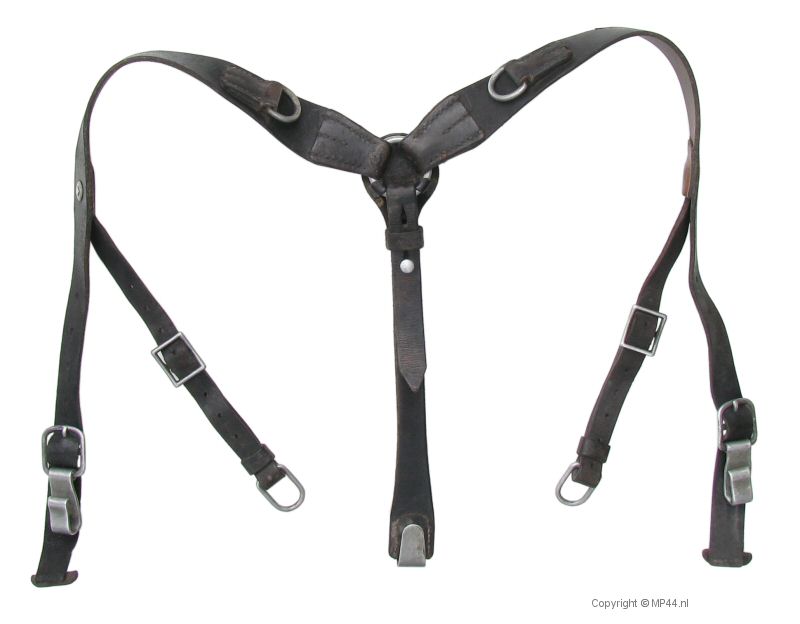
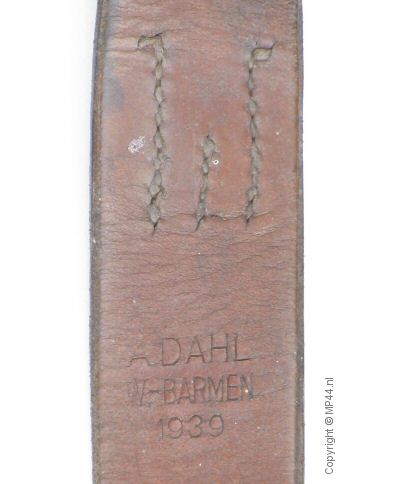
On the left :
The back of the wide strap the maker mark can be seen.
A. DAHL
W-BARMEN
1939
The Y belt is made from 2 leather
belts which were sewn over a metal ring with
a diameter of aprox 4,5 cm.
The leather belts have a total length of 66 cm. and have a width of aprox 4 cm. on the wide part.
-----------------------------------------------------------
below: an unfinished leather belt
for Y strap

The piece that is sewn onto itself after being put over the metal ring
Notice the holes that already have been made to make the sewing easier
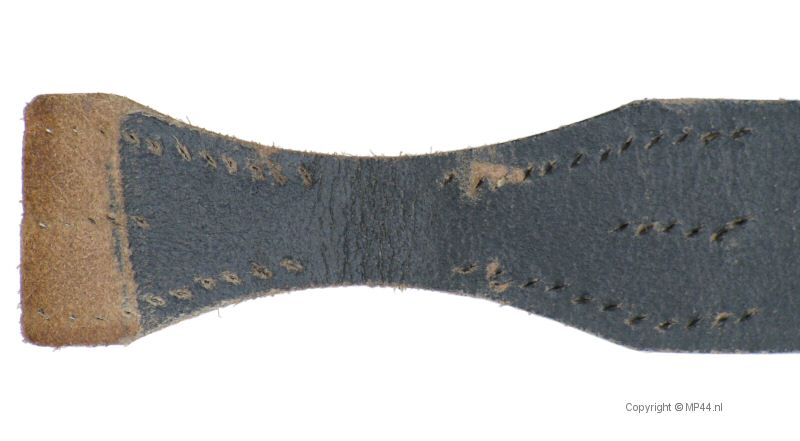
The ring itself was sewn on a leather protective piece with 2 leather tabs.
The reason the protective piece was sewn is to prevent damage to the uniform.
At the end of the protective piece a small loop is sewn to allow the passage of the backstrap.
note: often, the protective piece was stamped with the manufacturer stamp or Rb. number.
-------------------------------------------------------
below, the ring with the protective piece
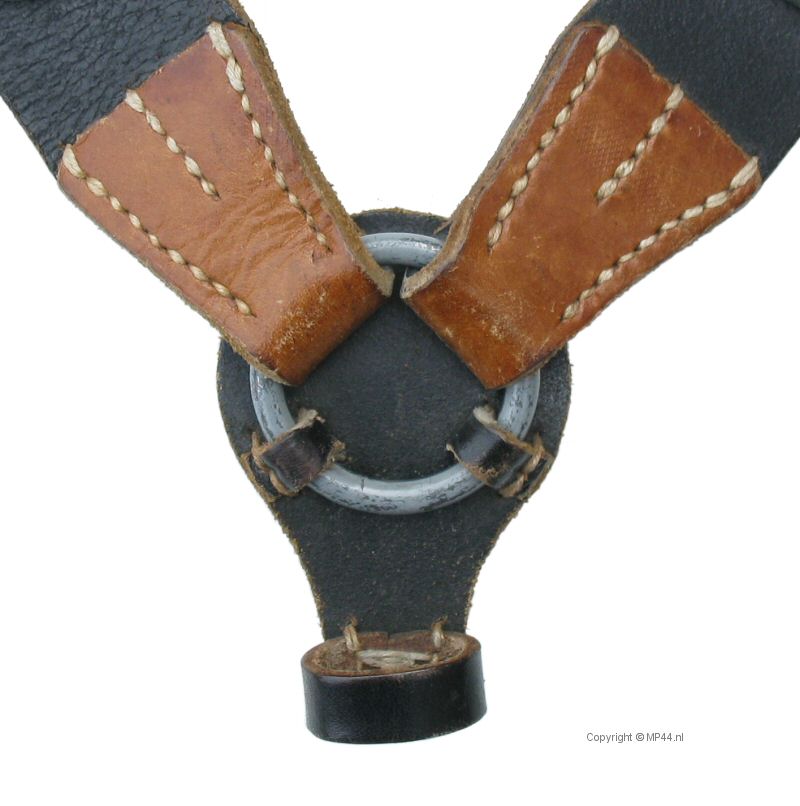
The back strap (also called end
strap) is aprox 43 cm. long and
normally
has 6 buttonholes and a metal button to adjust the length.
In this case 2 more buttonholes have been added to make it more adjustable.
At the end, a hook is riveted to
the strap and then again covered
with a leather piece of protection again to prevent wear of the Uniform.
-------------------------
below: the endstrap with metal hook and the leather protection

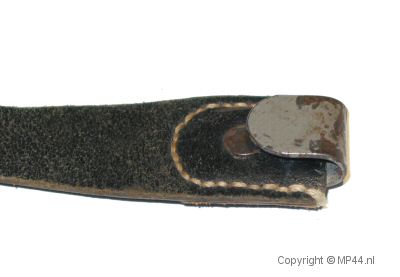
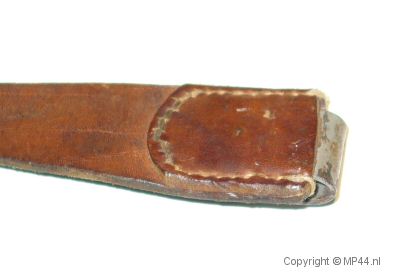
below: the method is shown how he endstrap passes through the ring
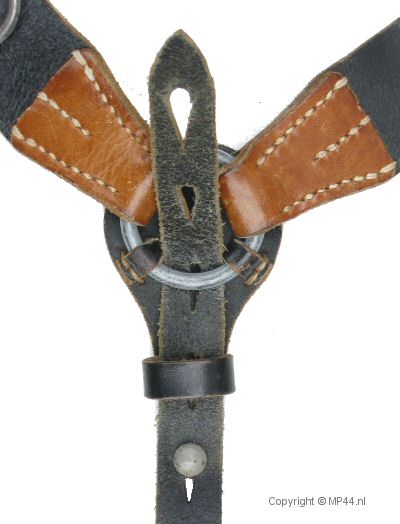

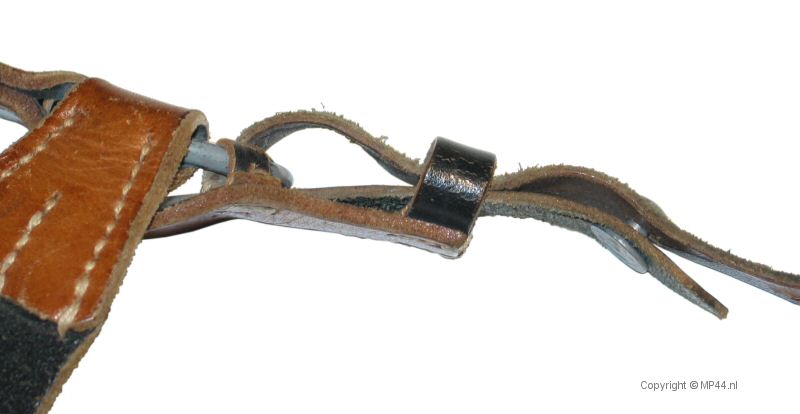
The auxiliary straps are riveted to the main straps and again covered with a leather piece for protection
We can see 2 big differences in the method of attaching the aux. straps to the main straps here:
On early until mid war Y-belts the sewing is not visible on the front.
On late war Y-belts (from around 1944) the sewing is visible on the front.
----------------------------------------------------------
below left: sewing on front visible
(late war)
below right: sewing not visible (early war)
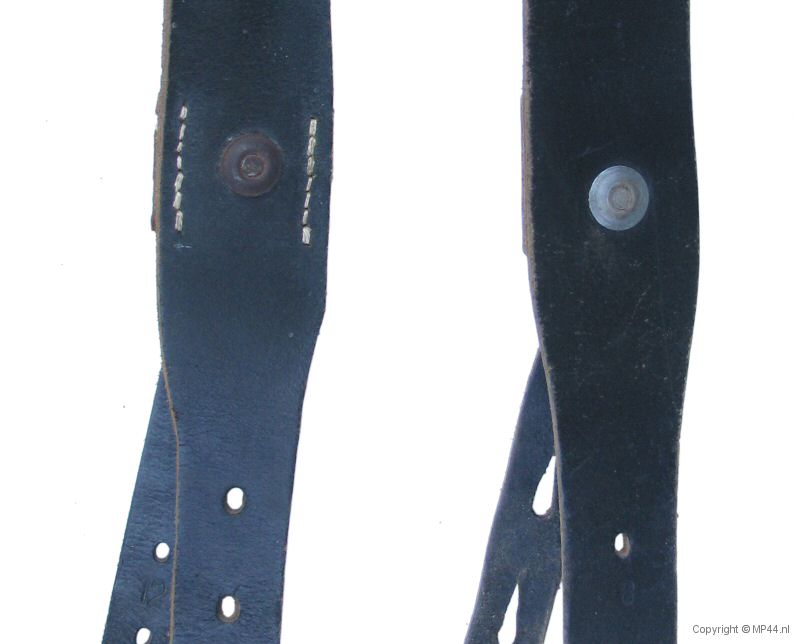
Here another picture of the unfinished Y-belt
Clearly visible the hole for the rivet, and the incisions made for sewing
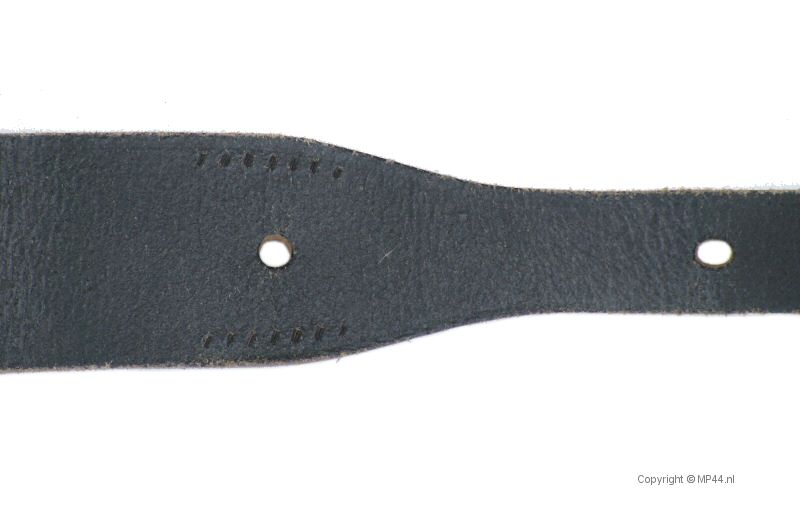
Also there are 2 different kind of
auxiliary straps but both versions
can be seen on both early and late war Y-belts.
Here we see the 2 versions of auxiliary straps.
Also seen are the little pieces of
leather sewn on the end of the main straps
which prevent the hooks from sliding off.
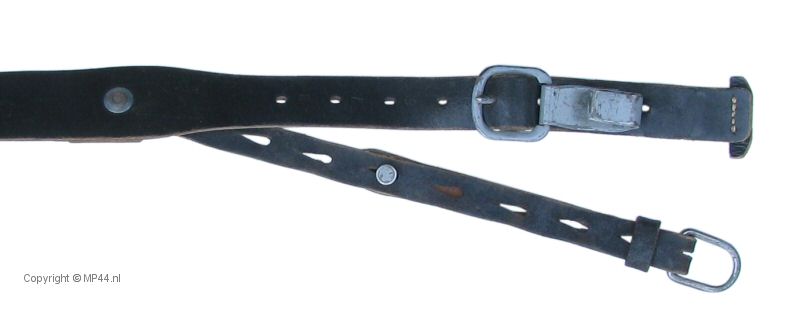
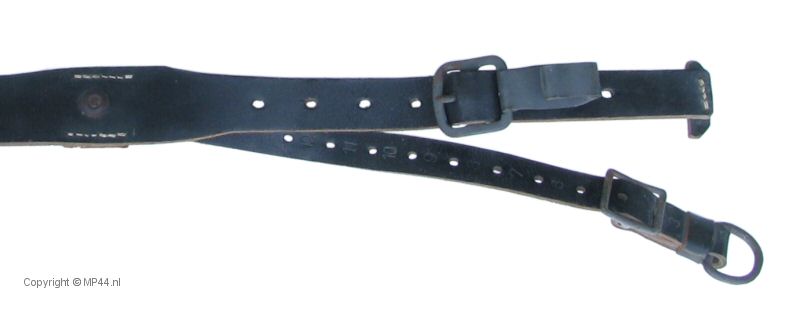
Side view of upper model
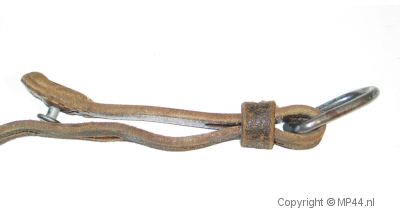
Side view of lower model

Often, the holes on the main strap and
/ or the auxiliary straps are numbered
but this is not allways the case.
below left an example where the main
strap holes are numbered ( 1 - 8 )
and below right an example where the auxiliary straps are numbered (1 -
12 )
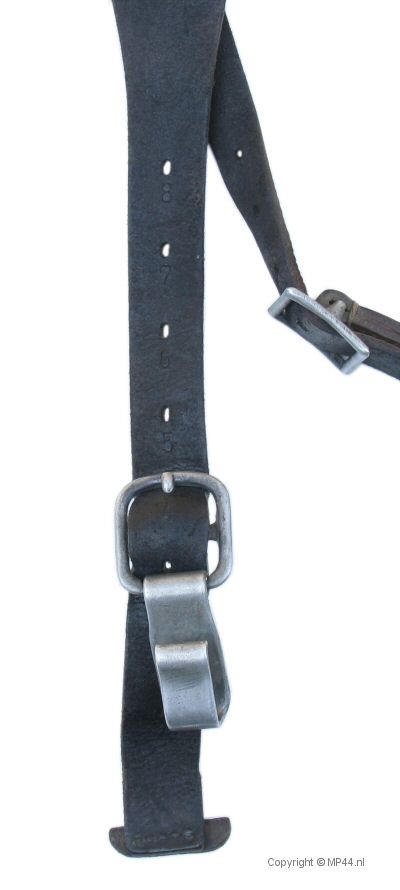
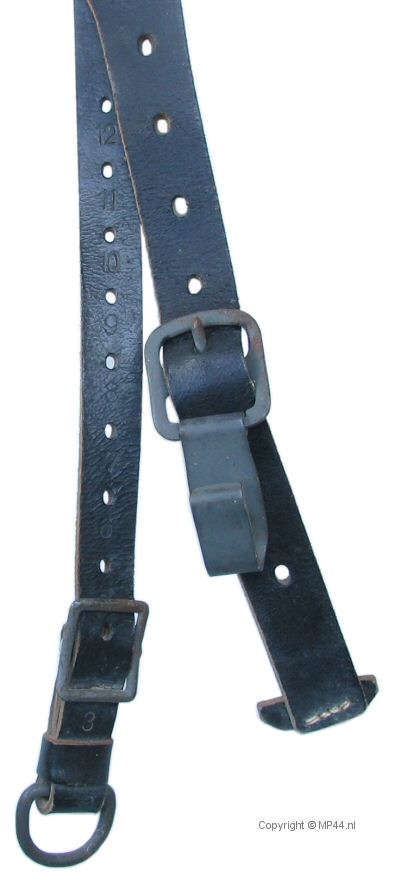
On the top of the main straps , the D-rings are sewn on.
These D-rings hold the A-frame (Gefechtsgepäck), and other back packs.
The 1st types of D-Rings are sewn
on in the direction of the straps (see below left) but later types
are sewn on the main straps at an angle of 45° (see below right) so that
when the Y belt is worn the D-rings point downwards
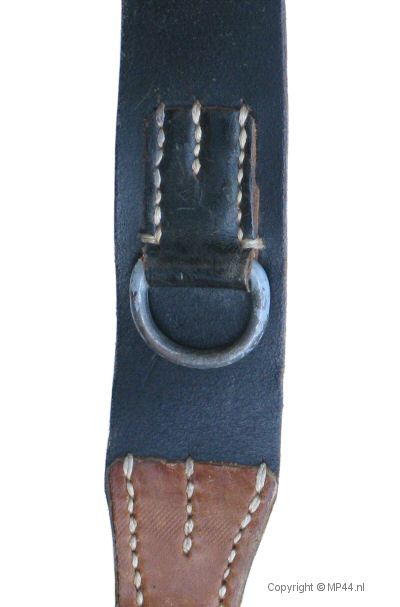
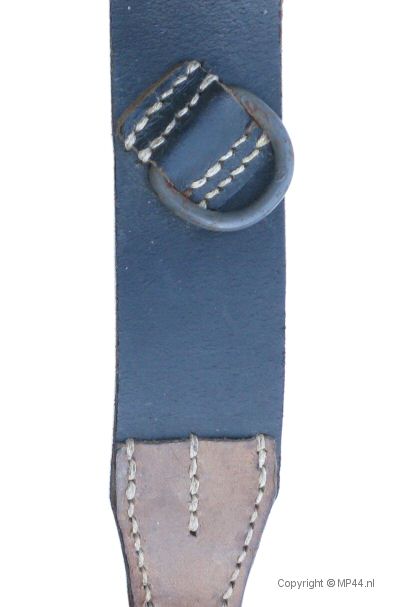
The specially designed backpack and
A-frame (Gefechtsgepäck) had hooks attached
to them which are to be
secured on the sewn on D-rings on the back of the Y-belt
Here a picture of an Y belt with the A-frame (Gefechtsgepäck) attached.
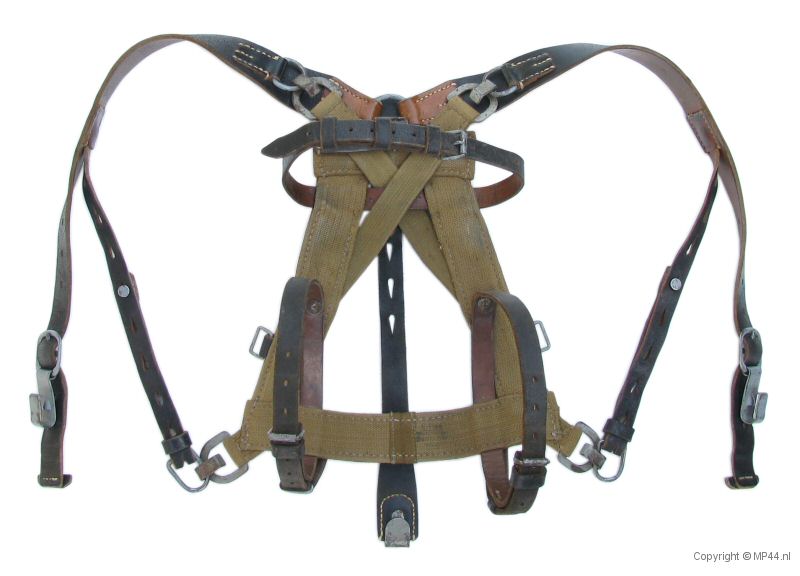
Below , a 1942 dated Y-belt in almost mint condition
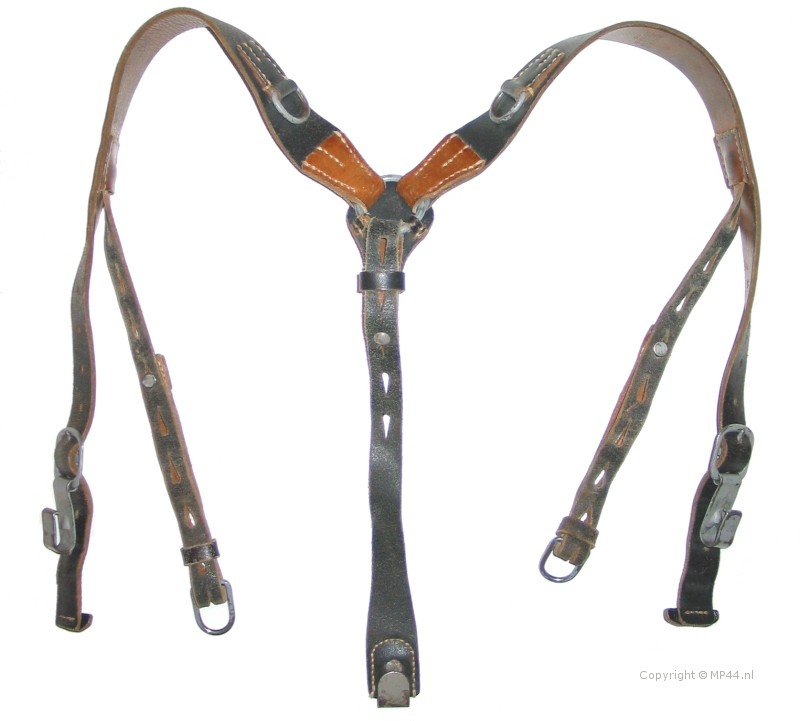
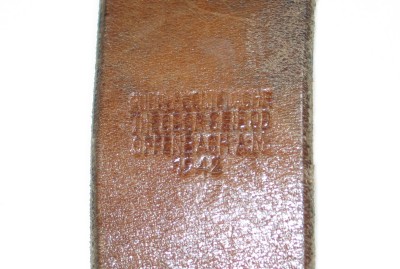
The example shown has the following markings:
RUDOLF
CONTENACHE
THEODOR SEIBOD
OFFENBACH A.M.
1942
The hooks on the straps are supposed
to hook onto the D-rings on the ammo pouches,
but were often hooked
straight on to the belt, or attached to the so called D-ring belt loops
(also covered in another section). Sometimes the auxiliary straps were
used.
Below the different methods of wearing which can be found on periodical photos
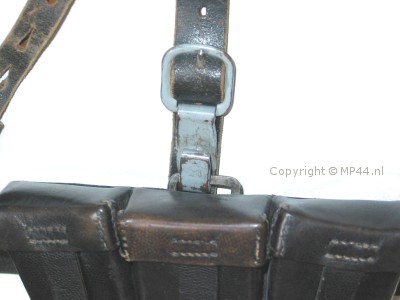
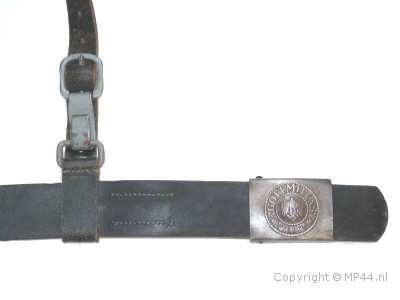
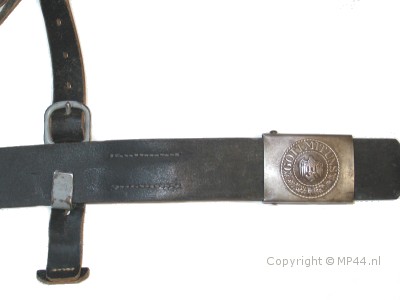

On the following page the tropical (or webbing) Y - belt will be shown